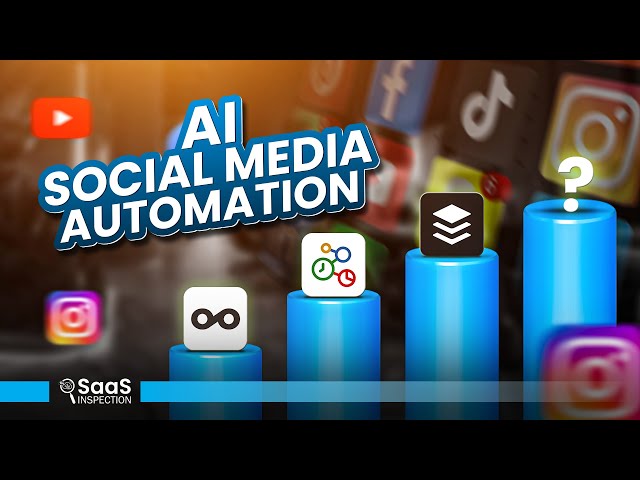AI Technology
AI technology, or artificial intelligence, refers to the capability of machines to execute tasks that traditionally require human intelligence, such as reasoning, learning, problem-solving, and perception. As a multifaceted field, AI encompasses crucial subfields including machine learning algorithms, natural language processing, and computer vision. The significance of AI technology continues to grow as it transforms various sectors, particularly healthcare, where AI-driven innovations are enhancing diagnostic accuracy and personalizing patient care. With the advent of advanced AI automation tools, industries are also witnessing improved operational efficiencies and groundbreaking developments in scientific research. Recently, the landscape of AI has expanded dramatically, showcasing remarkable advancements in applications like non-invasive cardiac imaging and real-time brain-computer interface co-pilots. These developments not only enhance performance but also address complex challenges in fields ranging from healthcare to drug discovery. The use of AI systems has proven beneficial in managing vast amounts of data, allowing for rapid decision-making and problem-solving capabilities that were once beyond reach. Amidst these advancements, however, challenges such as data quality and ethical considerations remain pivotal, highlighting the need for balanced progress in AI technology. Overall, AI is positioned as a foundational force in shaping future innovations, comparable to historical milestones like electricity and the internet.
What are the key features of Buffer for social media management?
Buffer is a comprehensive social media automation tool that offers several valuable features. It provides AI-powered post suggestions and an intuitive scheduling system that works across multiple platforms including Instagram, Twitter, LinkedIn, Facebook, Pinterest, and TikTok - all from a single dashboard. This eliminates the need to switch between different apps for posting content. Buffer's analytics provide critical insights into post performance, revealing which content generates the most engagement and the optimal posting times. For teams, it offers collaboration features that streamline content review and approval processes without requiring messy email chains. Each team member can have specific roles, ensuring content only goes live after proper approval.
Watch clip answer (02:50m)Why is the current AI boom happening now despite AI research being over 60 years old?
The current AI boom is occurring due to three key factors that only about seven companies globally possess simultaneously. First, they have vast computational power through proprietary chips and supercomputing clusters unavailable to outsiders. Second, they can afford to pay premium salaries to scarce technical experts who develop AI algorithms. Third, they have massive amounts of data accessible only through pervasive market reach. This convergence explains why the AI surge coincides with tech industry consolidation. The technological breakthroughs driving today's AI advancements are contingent on resources found within a concentrated tech ecosystem. As we consider AI and enhancement technologies, we must recognize this power dynamic shaping development and access to these transformative tools.
Watch clip answer (02:06m)How should we leverage AI to benefit economies while managing its potential risks?
AI should be leveraged across multiple domains including robotics, biomedical research, energy technologies, and manufacturing. According to Roubini, proper regulation is essential to ensure we get the best outcomes while mitigating risks like technological unemployment, wealth inequality, and weaponization. Maintaining vibrant economic competition is key to preventing monopolies and encouraging innovation. However, we must address AI's potential negative impacts, including misinformation, job displacement, and social backlash from increased inequality. Societies need to invest in education and skills development to help workers adapt, ensuring that technological advancement benefits everyone rather than just capital owners and highly skilled individuals.
Watch clip answer (06:21m)How will technology like artificial intelligence affect future jobs?
Jack Ma believes that technology, including artificial intelligence, won't eliminate jobs overall but will create more opportunities while replacing primarily repetitive tasks. Drawing parallels to past industrial revolutions, he notes that initial job displacement is temporary, followed by net job creation. While AI may be faster and smarter than humans, it lacks wisdom, beliefs, and heart - human qualities that remain irreplaceable. Ma advises people to prepare for this transition by focusing on uniquely human capabilities rather than competing with machines at memory or calculation, encouraging innovation and creativity to thrive in an AI-powered future.
Watch clip answer (03:48m)Why is a Siri update at WWDC significant for Apple?
A Siri update at WWDC is significant because its current performance is widely considered subpar. As James Douma bluntly states, 'Siri sucks,' and both experts express disappointment over how long improvements have taken. With competitors like ChatGPT and Claude advancing rapidly in the AI space, Apple's update is not just about improving functionality but about maintaining relevance in the evolving AI market. The anticipated announcement at WWDC represents Apple's acknowledgment that it needs to strengthen one of its core technologies to preserve its brand reputation for premium user experiences.
Watch clip answer (00:09m)What are the key capabilities and advancements of Google's Gemini AI models?
Google's Gemini AI models represent a significant breakthrough in multimodal capabilities, designed to natively process and reason across text, images, video, and code. Since its introduction, Gemini has demonstrated state-of-the-art performance on every multimodal benchmark. The advancement continued with Gemini 1.5 Pro, which delivers a major breakthrough in long-context processing, handling 1 million tokens in production – more than any other large-scale foundation model. Today, more than 1.5 million developers are leveraging Gemini models across Google's tools, making these advanced AI capabilities widely accessible.
Watch clip answer (01:04m)




